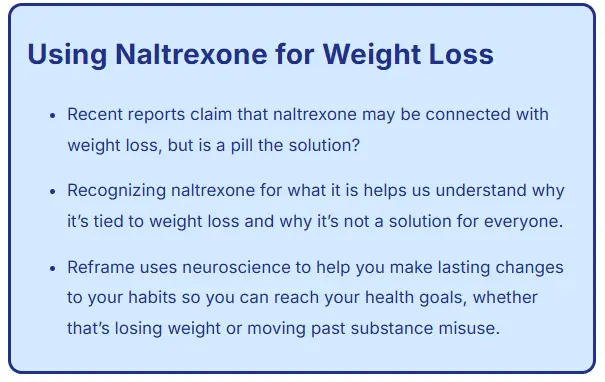Naltrexone powder is a versatile medication that has gained significant attention in the medical community for its various therapeutic applications. As an opioid antagonist, naltrexone works by blocking the effects of opioids in the brain, making it a valuable tool in addiction treatment and management. However, its uses extend beyond addiction therapy, with emerging research suggesting potential benefits in other areas of medicine. This blog post will explore the primary uses of naltrexone powder and its impact on various health conditions.
How does Naltrexone work for alcohol addiction?
Naltrexone has emerged as a powerful tool in the treatment of alcohol addiction, offering hope to millions struggling with alcohol use disorder (AUD). The medication works by targeting the brain's reward system, which plays a crucial role in the development and maintenance of addiction.
When consumed, alcohol triggers the release of endorphins in the brain, leading to feelings of pleasure and euphoria. These positive sensations reinforce drinking behavior, contributing to the cycle of addiction. Naltrexone intervenes in this process by binding to the brain's opioid receptors, effectively blocking the pleasurable effects of alcohol consumption.
By reducing the rewarding aspects of drinking, naltrexone helps individuals with AUD in several ways:

- Craving reduction: Naltrexone diminishes the intense cravings for alcohol that often drive relapse. Patients report feeling less compelled to drink, making it easier to maintain abstinence or reduce consumption.
- Moderation support: For those aiming to moderate their drinking rather than abstain completely, naltrexone can help reduce the amount of alcohol consumed per occasion. This approach, known as the Sinclair Method, involves taking naltrexone before drinking to gradually extinguish the reward association.
- Relapse prevention: In the event of a slip or relapse, naltrexone can help limit the extent of drinking by reducing the pleasurable effects, potentially preventing a full-blown return to heavy alcohol use.
- Cognitive improvement: By reducing alcohol consumption, naltrexone indirectly supports cognitive function, allowing individuals to make better decisions regarding their recovery.
Clinical studies have demonstrated the efficacy of Naltrexone Powder in treating alcohol addiction. A meta-analysis of 64 randomized controlled trials found that naltrexone significantly reduced the risk of heavy drinking and decreased drinking days compared to placebo. The medication is typically prescribed as part of a comprehensive treatment program that includes counseling, support groups, and other behavioral interventions.
It's important to note that naltrexone is not a cure for alcoholism but rather a tool to support recovery. The medication is most effective when used in conjunction with a strong commitment to change and ongoing support. Additionally, naltrexone treatment for alcohol addiction often requires patience, as the full benefits may take weeks or months to become apparent.
What are the benefits of Naltrexone for weight loss?
While primarily known for its role in addiction treatment, naltrexone has gained attention for its potential benefits in weight management. The use of naltrexone for weight loss is typically in combination with bupropion, a formulation known as Contrave. This combination has shown promising results in helping individuals struggling with obesity to achieve and maintain weight loss.

The mechanism by which naltrexone contributes to weight loss is multifaceted:
- Appetite suppression: Naltrexone may help reduce food cravings and overall appetite by modulating the brain's reward system. This can lead to decreased calorie intake and support weight loss efforts.
- Improved impulse control: By influencing the opioid system, naltrexone may enhance an individual's ability to resist food-related impulses, particularly those associated with high-calorie or palatable foods.
- Metabolic effects: Some research suggests that naltrexone may have positive effects on metabolism, potentially increasing energy expenditure and fat oxidation.
- Synergistic action with bupropion: When combined with bupropion, naltrexone's effects on weight loss are enhanced. Bupropion acts on dopamine and norepinephrine pathways, further reducing appetite and increasing energy expenditure.
Clinical trials have demonstrated the efficacy of naltrexone/bupropion combination for weight loss. A large-scale study published in the Lancet found that participants taking the combination lost significantly more weight compared to those on placebo. On average, individuals taking naltrexone/bupropion lost 5-10% of their initial body weight over a year, with some achieving even greater results.
It's important to note that Naltrexone Powder for weight loss is typically prescribed for individuals with a BMI of 30 or greater (or 27 with at least one weight-related comorbidity) and should be used in conjunction with a reduced-calorie diet and increased physical activity. The medication is not a magic solution but rather a tool to support comprehensive lifestyle changes.
While the weight loss effects of naltrexone are promising, it's crucial to consider potential side effects and contraindications. As with any medication, individuals should consult with a healthcare provider to determine if naltrexone-assisted weight loss is appropriate for their specific situation.
Can Naltrexone be used to treat chronic pain conditions?
The use of naltrexone in the treatment of chronic pain conditions represents an exciting frontier in pain management. While traditionally used at higher doses for addiction treatment, low-dose naltrexone (LDN) has emerged as a potential therapy for various chronic pain syndromes. This off-label use has gained traction in recent years, with growing evidence supporting its efficacy and safety profile.
The mechanism by which low-dose naltrexone may alleviate chronic pain is complex and not fully understood. However, several theories have been proposed:
- Anti-inflammatory effects: LDN may reduce inflammation by modulating glial cell activation in the central nervous system. Glial cells play a crucial role in pain signaling and chronic inflammation.
- Endorphin upregulation: By temporarily blocking opioid receptors, LDN may lead to a compensatory increase in endogenous opioid production, potentially enhancing natural pain relief mechanisms.
- Neuroprotective properties: Some research suggests that LDN may have neuroprotective effects, potentially slowing the progression of neurodegenerative conditions associated with chronic pain.
- Immune system modulation: LDN may help regulate the immune system, which is often implicated in chronic pain conditions, particularly those with an autoimmune component.
Clinical studies and anecdotal evidence have shown promising results for LDN in treating various chronic pain conditions, including:
- Fibromyalgia
- Complex Regional Pain Syndrome (CRPS)
- Chronic low back pain
- Inflammatory bowel diseases (e.g., Crohn's disease)
- Multiple sclerosis-related pain
- Rheumatoid arthritis
A systematic review published in the Journal of Pain Research found that LDN showed significant promise in reducing pain intensity and improving quality of life in patients with fibromyalgia. Another study focused on Crohn's disease reported that LDN not only reduced pain but also improved overall disease activity and endoscopic findings.
One of the key advantages of LDN for chronic pain management is its favorable safety profile. Unlike traditional opioid pain medications, LDN does not carry the risk of addiction or respiratory depression. Additionally, the side effect profile is generally mild and transient, with the most common complaints being vivid dreams and mild sleep disturbances, which often resolve with continued use.
It's important to note that the use of Naltrexone Powder for chronic pain is still considered experimental, and more large-scale, rigorous clinical trials are needed to fully establish its efficacy across various pain conditions. However, the growing body of evidence and positive patient experiences have led many pain specialists to consider LDN as a potential option, particularly for patients who have not responded well to conventional treatments.
Patients interested in exploring LDN for chronic pain should consult with a healthcare provider experienced in its use. The dosing for pain management (typically 1-4.5 mg daily) is significantly lower than that used for addiction treatment, and careful titration is often necessary to achieve optimal results.
Conclusion
Naltrexone powder has demonstrated remarkable versatility in its medical applications, from addiction treatment to weight management and chronic pain relief. As research continues to uncover new potential uses for this medication, it's clear that naltrexone will remain an important tool in the medical arsenal. However, it's crucial to remember that Naltrexone Powder should always be used under the guidance of a healthcare professional, as part of a comprehensive treatment plan tailored to individual needs and circumstances.
If you are also interested in this product and want to know more product details, or want to know about other related products, please feel free to contact sasha_slsbio@aliyun.com.
References
- Jonas, D. E., et al. (2014). Pharmacotherapy for adults with alcohol use disorders in outpatient settings: a systematic review and meta-analysis. JAMA, 311(18), 1889-1900.
- Greenway, F. L., et al. (2010). Effect of naltrexone plus bupropion on weight loss in overweight and obese adults (COR-I): a multicentre, randomised, double-blind, placebo-controlled, phase 3 trial. The Lancet, 376(9741), 595-605.
- Younger, J., et al. (2014). The use of low-dose naltrexone (LDN) as a novel anti-inflammatory treatment for chronic pain. Clinical rheumatology, 33(4), 451-459.
- Patten, D. K., et al. (2018). The safety and efficacy of low-dose naltrexone in the management of chronic pain and inflammation in multiple sclerosis, fibromyalgia, Crohn's disease, and other chronic pain disorders. Pharmacotherapy: The Journal of Human Pharmacology and Drug Therapy, 38(3), 382-389.
- Sudakin, D. (2016). Naltrexone: Not Just for Opioids Anymore. Journal of Medical Toxicology, 12(1), 71-75.
- Ramanathan, S., et al. (2012). Clinical pharmacokinetic and pharmacodynamic profile of naltrexone. Clinical pharmacokinetics, 51(12), 883-891.
- Bodkin, J. A., et al. (2009). Low-dose naltrexone for the treatment of fibromyalgia: findings of a small, randomized, double-blind, placebo-controlled, counterbalanced, crossover trial assessing daily pain levels. Arthritis & Rheumatism, 61(9), 1193-1197.
- Smith, J. P., et al. (2011). Therapy with the opioid antagonist naltrexone promotes mucosal healing in active Crohn's disease: a randomized placebo-controlled trial. Digestive diseases and sciences, 56(7), 2088-2097.
- Mousavi, S. G., et al. (2015). The effects of naltrexone on alcohol use and quality of life in alcohol-dependent patients. Journal of Research in Medical Sciences, 20(12), 1151-1157.
- Akil, H., et al. (1984). Endogenous opioids: biology and function. Annual review of neuroscience, 7(1), 223-255.

